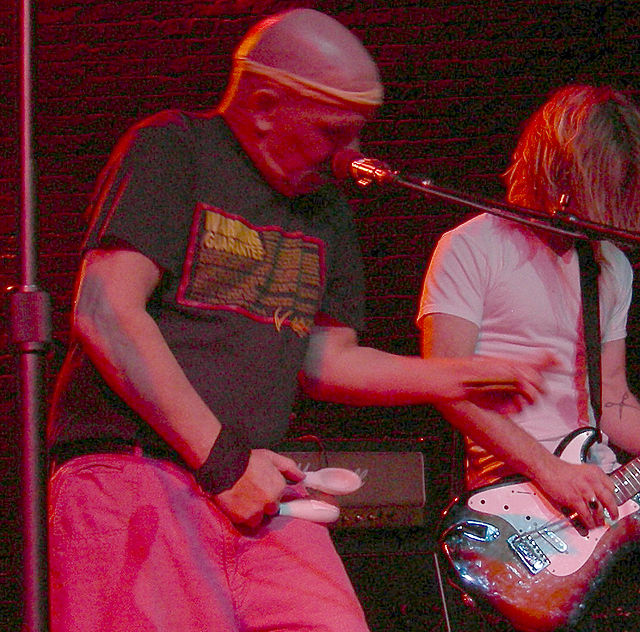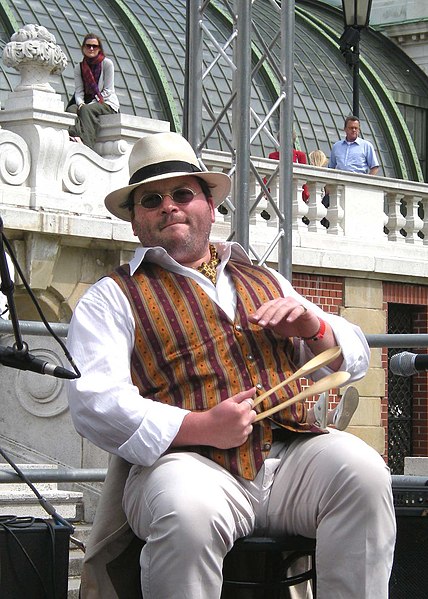The bones, also known as rhythm bones, are a folk instrument that, in their original form, consists of a pair of animal bones, but may also be played on pieces of wood or similar material. Sections of large rib bones and lower leg bones are the most commonly used bones, although wooden sticks shaped like true bones are now more often used. Metal spoons may be used instead, as is common in the United States, known as "playing the spoons". The technique probably arrived in the U.S. via Irish and other European immigrants, and has a history stretching back to ancient China, Egypt, Greece, and Rome.
They have contributed to many music genres, including 19th century minstrel shows, traditional Irish and Scottish music, the blues, bluegrass, zydeco, French-Canadian music, and music from Cape Breton in Nova Scotia. The clacking of the loose rib bones produces a much sharper sound than the zydeco washboard or frottoir, which mimics rattling a bone up and down a fixed ribcage.

The Bone Player by William Sidney Mount, 1856
Fragment of a Kylix, Greek, 510-500 BCE, Terracotta, red-figure technique
Spoon (musical instrument)
Spoons can be played as a makeshift percussion instrument, or more specifically, an idiophone related to the castanets. They are played by hitting one spoon against the other.
Artis the Spoonman playing the spoons in 2007.
Klaus P. Steurer in '16er Buam' performance at Vienna's annual Stadtfest, 2009, in 'Burggarten'.
Balıkesir zeybek dance
Image: Satz Holzloeffeltanz Kasiklar






